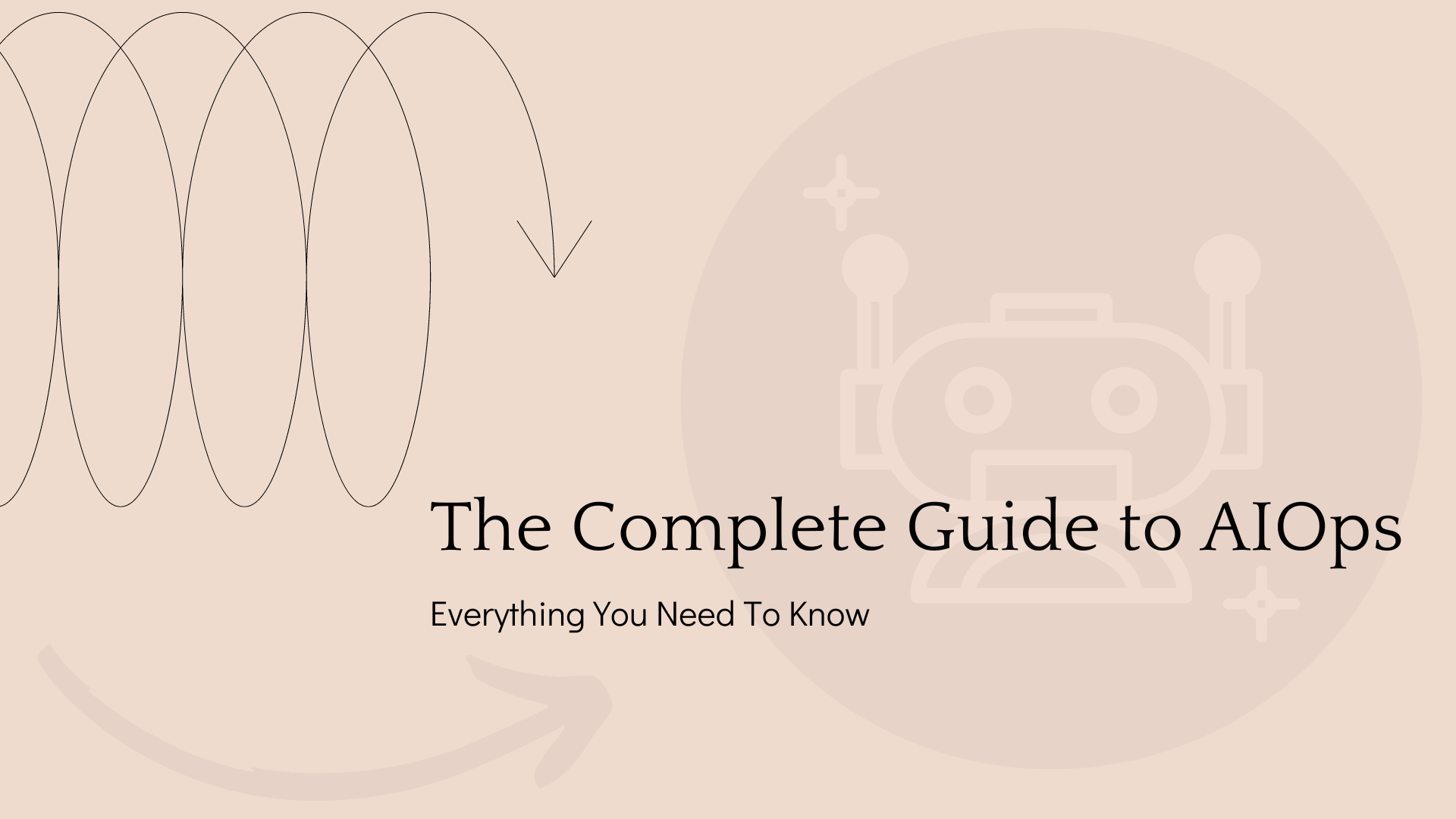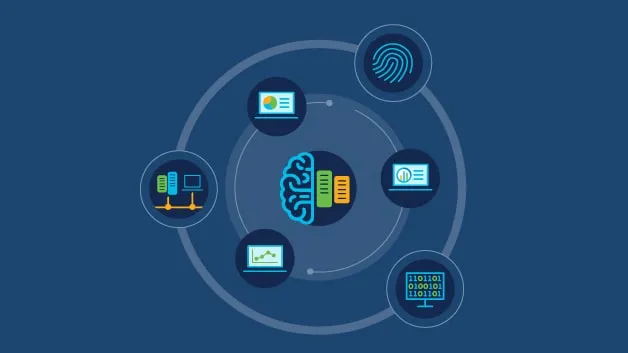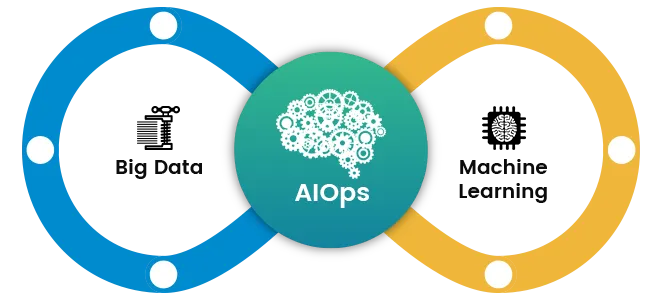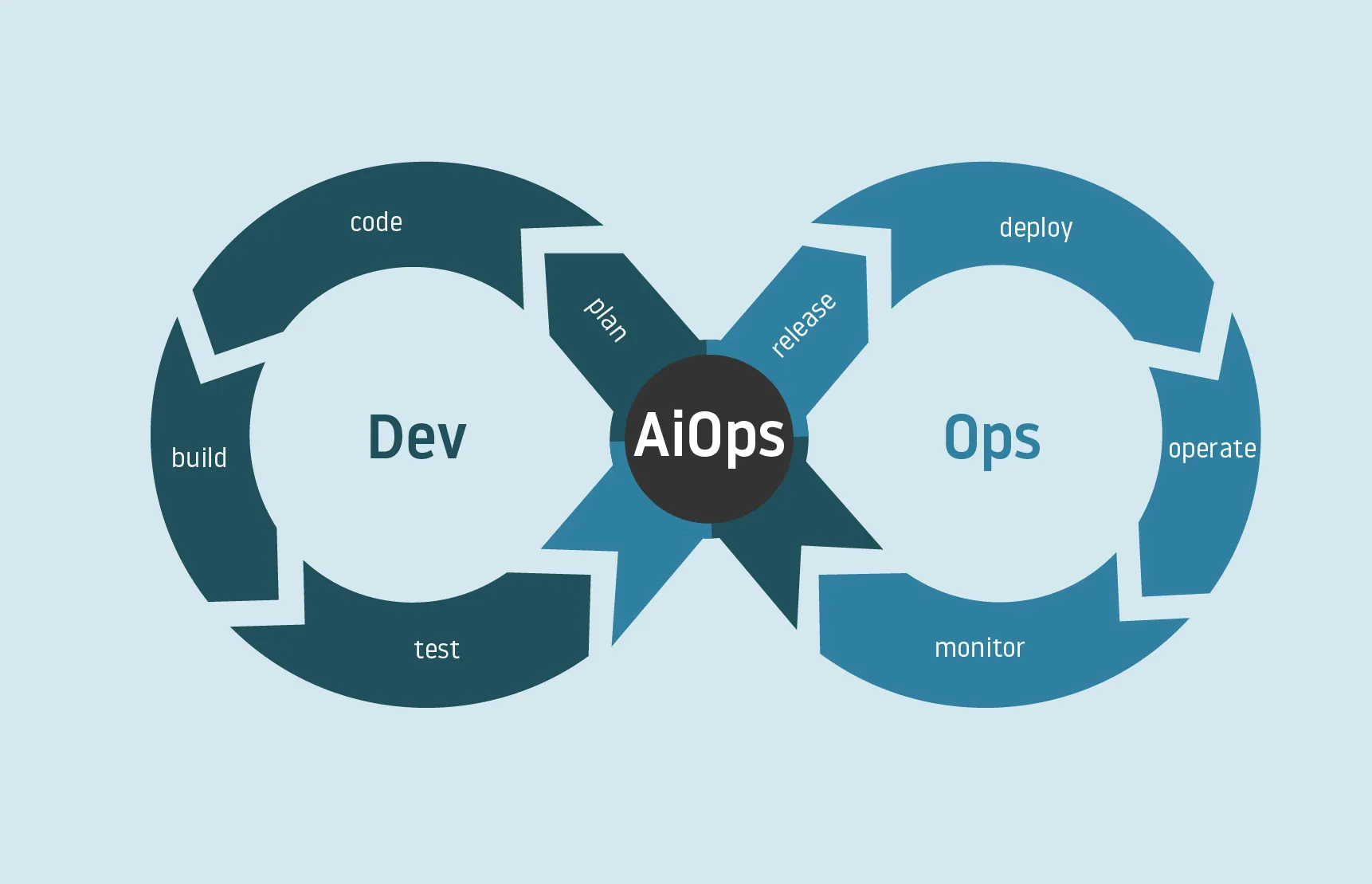The Complete Guide to AIOps - Everything You Need to Know
 Brayan Kai Mwanyumba
Brayan Kai Mwanyumba
Imagine a world where you can enjoy the coastline lifestyle with ease, as AI automates the tedious tasks of monitoring and fixing IT issues in real-time. This article will help you dive into the exciting world of AIOps, and learn why it's a must-have. We'll also cover how it works, its use cases, and most importantly, how to get started with Artificial Intelligence in IT Operations as a business.
What is AIOps?
Artificial Intelligence for IT Operations (AIOps) is a multilayered technology platform that automates and enhances IT operations through Artificial intelligence and machine learning. This empowers IT professionals with the information they need to make decisions and ultimately resolve service to an application faster.
AIOps Platforms use big data to automatically categorize and respond to problems in real-time by gathering data from various operation tools and devices. All this while ensuring they still provide traditional historical analytics.
Is AIOps the Same As DevOps?
DevOps refers to the continuous development and delivery of a project following the important steps of gathering information, development, testing, staging, and deployment to production.
AIOps, on the other hand, involves continuous integration and development processes while adding retraining into the process. This is where the initial data ingested into the pipeline keeps upgrading through the training part as it learns more and more about the business through machine learning.
Therefore, AIOps differs from DevOps since the data remains the same in DevOps, but in AIOps, the AI Model keeps learning, and hence the data evolves from time to time.
Why AIOps is Important and Why You Need It

To understand the great importance of AIOps, let's have a case scenario where you run a savings company that has thousands of clients.
Your company's focus is to ensure the application runs smoothly and clients can deposit or withdraw their savings consistently and on a regular basis.
Can you imagine what would happen when you receive a call from your customer care representative in the middle of the night that a client has been trying to perform a transaction since early morning, but the application has been down?
What would you do to get the application running and satisfy your client?
This is where AIOps comes in. It can identify, address and resolve slowdowns and outages of applications faster than IT Professionals can sift through multiple IT Ops tools to solve the problem.
Advantages of Using AIOps
Some benefits of AIOps include:
AIOps helps businesses achieve a faster MTTR (Mean Time To Resolve. This is the average time it takes to fully resolve a system failure. AIOps can detect fundamental issues and provide remedies faster and more precisely than humans can. This makes it possible for organizations to establish and meet the previously unimaginable MTTR targets. For example, a telecommunication provider in Brazil, Nextel, was able to use AIOps to reduce incident response times from 30 minutes to less than 5 minutes. You can read more about this in this article by IBM Cloud.
AIOps ensures applications evolve from Reactive to proactive and finally to predictive management. Since it never stops learning, AIOps keeps getting better at identifying urgent alerts or signals that could relate to more urgent situations. It can provide predictive alerts that let IT teams address potential problems before they slow down the application.
AIOps helps you modernize your IT Operations and your IT Operations team. Instead of being bombarded with every alert from every environment. AIOps Operations team only receives alerts that need specific service levels to thresh hold or parameters. The more AIOps run and automates a system, the more it helps keep the “light on” with less human effort. And the more your IT Operation team can focus on tasks with greater strategic value to the business.
How Does AIOps Work?

The easiest way to understand how AIOps works is to understand the role of each component. These include Big Data, Machine Learning, and Automation.
AIOps uses a Big Data Platform to aggregate siloed IT Operations data in one place. This data can include historical performance data, streaming real-time operations events, system logs and metrics, and network data.
This is where then AIOps applies focused analytics and machine learning capabilities. The technology works by:
a) Separating significant event alerts from the noise. AIOps filters important event alerts from irrelevant ones by using analytics such as rule application and pattern matching to analyze IT operations data and identify significant events.
b) Identifying the root cause of problems and suggesting solutions. AIOps uses algorithms that analyze events in a specific industry or environment. This helps to pinpoint the cause of an outage or performance issue and provide suggestions for remediation.
c) Automating responses, including real-time problem resolution. It can route alerts to the appropriate IT team and even create response teams, and in some cases, use machine learning to trigger automatic system responses that resolve issues before users are affected
d) Continually learning and improving future handling of problems. Based on the analytics results, machine learning capabilities can change algorithms or create new ones to identify problems before they occur and recommend effective solutions.
AIOps Use Cases
In Addition to optimizing IT Operations AIOps Visibility and Automation can support and drive other important business and IT innovations. These include:
- Anomaly or Threat Detection
AIOps helps improve security by using advanced algorithms to detect potential threats. Machine learning is used to identify trends that could affect service availability.
- Event Correlation
Infrastructure teams are faced with floods of alerts, and yet, there is only a handful that matters. AIOps can mine those alerts by using inference models to group them and identify upstream root cause issues at the problem's call. This transforms the overloaded inbox with alert emails into one or two notifications that are important.
- Intelligent Alerting and Escalation
After the root cause of alerts is identified, IT Operations teams can use AI to automatically notify subject matter experts of the incident's location for faster remediation. Artificial intelligence can act as a routing system =that immediately sets the remediation workflow in motion before human beings ever get involved.
Park Place technologies are an example of a company leveraging AIOps' power.
- Incident Auto-Remediation
AIOps is also an end-to-end bridge between IT Service Management and IT Operations Management tools. AIOps uses AI to identify and fix issues at their root cause by analyzing infrastructure data and sending the results to the IT Service Management team through API integration.
- Capacity Optimization
Capacity optimization improves application availability and workloads by using predictive planning and AI-based analytics. This analysis proactively monitors resources, such as utilization, bandwidth, and memory, to increase application uptime.
How to Get Started with AIOps

Getting started with AIOps is not as difficult as one might assume. Below are the top three actions a business can take to ensure they seamlessly implement AIOps in their IT Operations.
- Put together a Business Scenario and a Target.
You can't start implementing an idea without a well-laid-out business project rubric on what you want to solve. Set out the key Goals of your AIOps plan by asking yourself questions such as:
Which part of the business would benefit the most from the implementation?
What are some Key Performance Indicators (KPIs) that will gauge the success of the implementation?
Also, look at how your business has been affected by system outages and slowdowns.
How have outages impacted your business financially?
How have outages affected your customers' trust in your products?
Check your revenues before and use this to set a solid plan on what you want to achieve, and remember to consider even the simplest details.
- Set Clear, Small but Specific Objectives.
Don't be in a hurry to start implementing massive project sprints through AIOps. Start small and build from there with specific target goals in mind.
Kick off with the little available data, ingest it into the business, create meaningful insights, and start solving your most pressing business problems. This will simplify problem-solving that even future business leads can comprehend.
- Pick the AIOps Solution for Your Business
As they say, everything looks like a nail when all you have is a hammer. Don't get carried away with the multiple benefits AIOps has to offer. Instead, focus on the need that you want to address.
There are dozens of AIOps solutions on the market, so be sure to understand the different types that already exist and why you need to select any of them.
Below are simple criteria features you should consider as you chose your AIOps Platform:
a) The type of AIOps solutions you need. Is it Domain-Agnostic or Domain-Specific? Is it going to meet your needs?
b) Your preferred time of implementation. This should align with the needs and nature of your business. A payment application used in a hospital will need faster implementation time compared to a grocery selling app used by rural farmers to connect with wholesale buyers.
c) The ease of use and maintenance of the platform you want. Does the maintenance cost match your budget? Do you have the required personnel and resources to handle and maintain the system?
It's never wise to overturn your pockets and spend more than you had planned. Choose an AIOps plan that best solves your business problem and falls within your budget range.
Before signing the contract with your selected AIOps provider, book a demo with them to test the technology. This gives you a chance to ask the provider about their client support guidelines and their legal guidelines as well. Lastly, if they are an international company, find out if they are licensed to provide solutions in your country,
Conclusion
AI Ops is revolutionizing how organizations manage their IT operations. With its ability to collect and analyze data from various sources in real time, AIOps has become a game changer in the industry.
From identifying and fixing issues to predicting and preventing potential problems, AIOps is making IT operations more efficient and cost-effective. Whether you are just getting started or are a seasoned pro, understanding AIOps is essential in today's fast-paced digital world.
Embrace the “coastal lifestyle” and join the AI Ops revolution.
Thank you for taking the time to read this article. I would love to hear your feedback in the comments section below.
Subscribe to my newsletter
Read articles from Brayan Kai Mwanyumba directly inside your inbox. Subscribe to the newsletter, and don't miss out.
Written by

Brayan Kai Mwanyumba
Brayan Kai Mwanyumba
I am a Data Scientist that is passionate about the Community, Developer Relations, Technical Writing and Open Source. I currently volunteer at several developer communities owing to my strong passion for supporting women in technology, advocating for inclusion and diversity, and empowering up coming technologists. I refer to this as my personal mission. It makes me happier, more balanced, and gives me a stronger sense of purpose to innovate, share, and teach in and with the community rather than just for it.